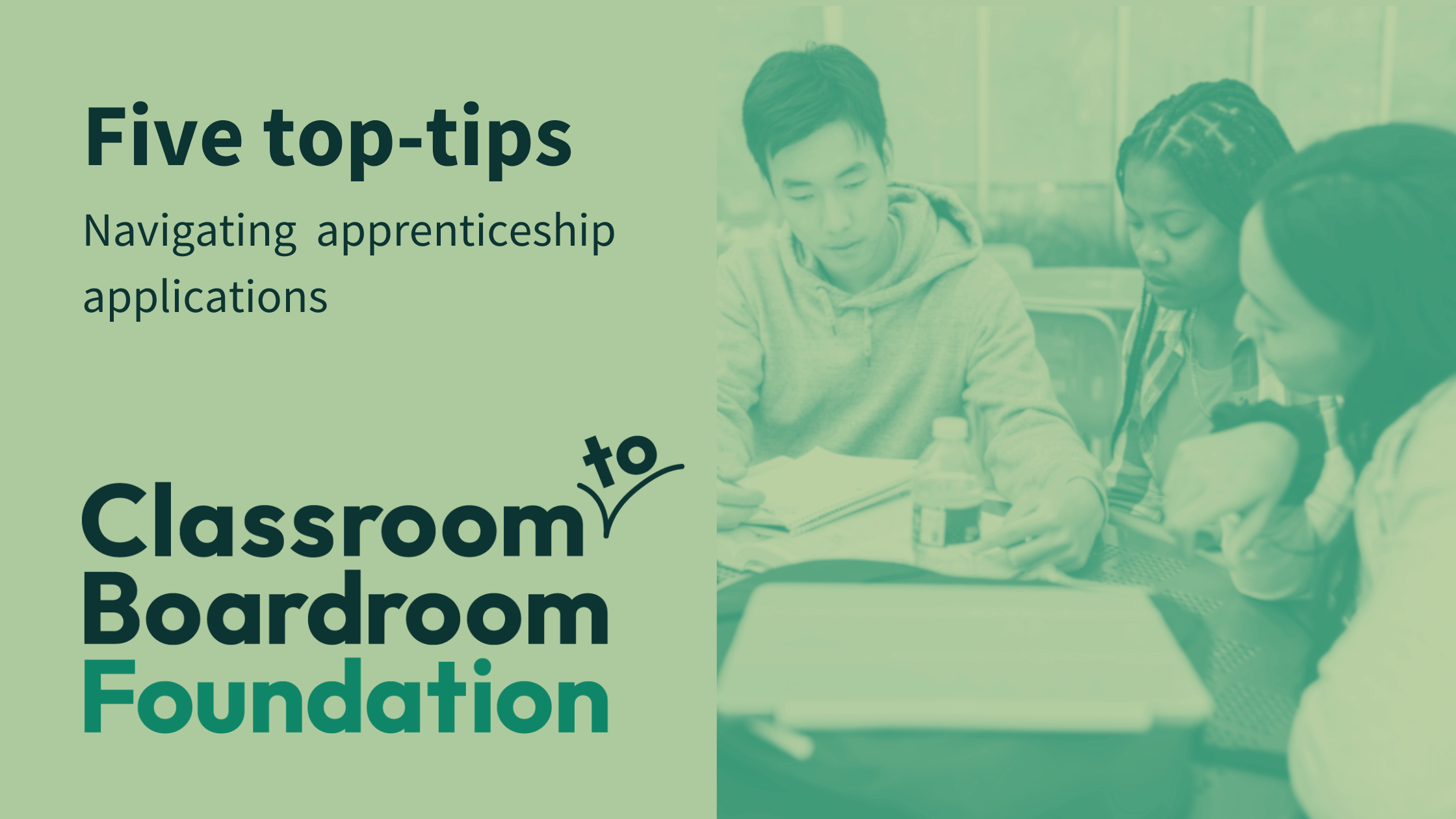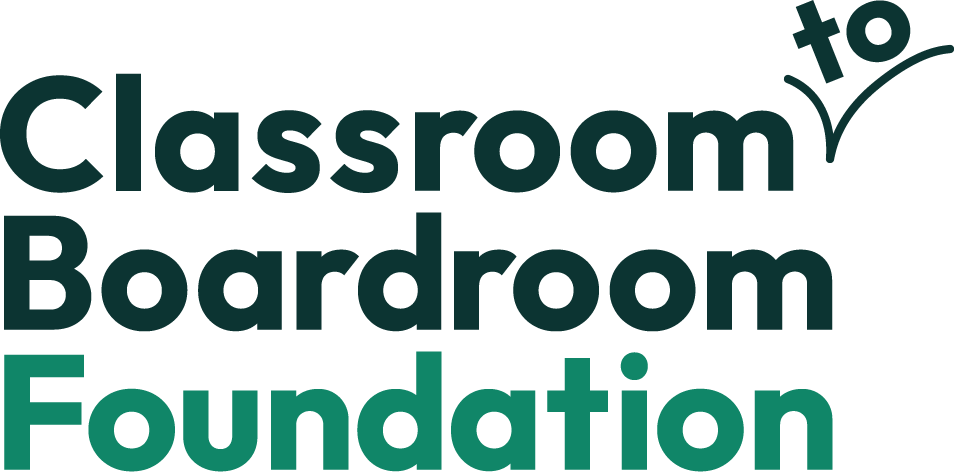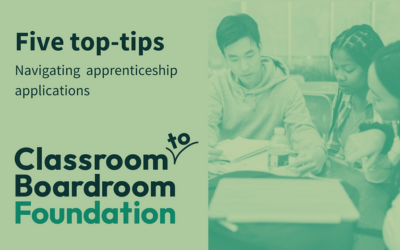5 Top-Tips: Navigating Apprenticeship Applications
The Classroom to Boardroom Foundation team here! Our team offers support and guidance to students, attending public schools and colleges across England.
How can we support you?
We provide support to you in building your workplace confidence and readiness ahead of your first steps post-16 or post-18. If you are in Year 10 or above and curious about the best professional direction for you, get in touch. You can reach us here through our Student Network.
Our aim…
To increase confidence, encourage you to take the lead, and set yourself up as best as possible in what are often challenging and competitive recruitment processes.

In this article…
We share FIVE top tips to guide you through apprenticeship applications. We cover:
- Before applying
- During the process
- After the process
Our Five Top Tips
1. Map and track
There is no one site to find opportunities so missing out can be easy but you can reduce the risk and take control!
Create a list of your skills/interests. Use these keywords to Google companies offering apprenticeships. Record the opportunities you like to track their application dates and your progress.
When to prioritise: Begin mapping this out from September and track all year round.
2. Plan A, B and C
What if you don’t get your top apprenticeship… or any? What if you don’t reach your grades after receiving an offer?
Your plans B and C and working towards them means you have options that excite you, no matter what!
When to prioritise: June-December
3. Prepare
Research the company, the role, and know what you want from the role. Familiarise yourself with current trends in the sector by keeping up to date on the news or new research.
Practice your introduction and use STAR to practice answers that you can use to show your skills and motivations.
Be ready to make a great impression (test your tech/arrange travel/practice your smile/plan your outfit)
When to prioritise: October onwards
4. Ask questions
Your professionalism is vital. You are responsible for being on top of the process (often, there is not a second chance if you miss a deadline). If you are unsure about what is required from you seek clarification in advance.
Always ask questions at the end of your interview as it showcases your interest. Have these prepared in advance, examples include things you want to know about the company/role.
5. Follow up
Within 48 hours, send a personal digital thank you note to the people you met in the company. If you don’t have a contact, you can send this note to the person who facilitated the meeting (thank them too). This helps build relationships, if not immediately, for the future.
If you are unsuccessful, always ask for feedback. This will help you prepare for future processes.



